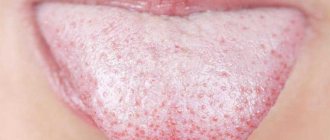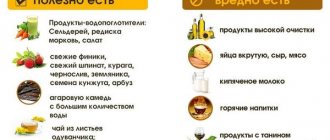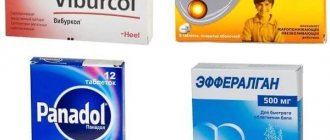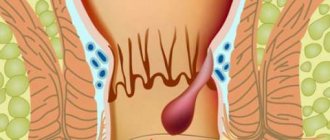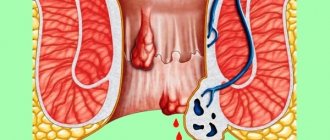A healthy digestive system is the key to the full functioning of all organs and systems. Both diseases of internal organs and infection with parasites can disrupt this harmony. From this article you will learn everything about what salmonellosis is, what are the signs of infection entering the body, what are the symptoms and treatment of salmonellosis in children and for what reasons does this disease occur.
What is salmonellosis
Salmonellosis is an infectious disease caused by the penetration of the Salmonella bacterium into the digestive system of the body. Since the child is not able to fully monitor careful hygiene and is often outdoors and in contact with animals, the risk of infection increases.
Salmonellosis occurs more often in the warm season. Cases of the disease can be isolated, but sometimes outbreaks of infection occur. The disease is quite severe. Salmonellosis in children under one year of age and in infants occurs with severe dehydration, intoxication, and septicemia. In older children, symptoms of salmonellosis may resemble typhus.
How to prevent salmonellosis
Measures to prevent salmonellosis:
- Eat only well-heated foods (meat, eggs).
- If there is a person sick with salmonellosis at home, provide him with personal hygiene and eating utensils.
- During wet cleaning, it is also necessary to wash children's toys.
- Make sure that the baby does not take various objects from the floor into his mouth.
- Do not swim in prohibited bodies of water.
- Limit or eliminate the child’s contact with pigeons, chickens and other farm animals.
Expert advice
- Gastric lavage in a child can be done in this way: offer to drink a glass of liquid, then press your finger on the tip of the tongue, inducing vomiting. Washing continues until the wash water is clear. Remember that gastric lavage should not be performed on your own at home for children under 3 years of age! It is not advisable to use a spoon to induce a gag reflex, as the metal can damage the soft tissues of the oral cavity.
- Self-medication and treatment with traditional methods for salmonellosis is unacceptable.
- For preventive purposes, Salmonella bacteriophage can be prescribed to family members of a sick child.
- After an illness, the child develops immunity that lasts up to 12 months.
- It is better not to store food prepared for a child. Otherwise, it must be reheated to a temperature of 70 C.
05/09/2015 Doctor children
Features of the pathogen and route of infection
Salmonella Enteritidis (the causative agent) affects humans and animals. The bacterium successfully tolerates cold temperatures and is resistant to many antibiotics. However, even short-term exposure to high temperatures leads to the death of the infection.
You can become infected with salmonella through food. Here are the main foods that can cause salmonellosis:
- eggs;
- meat;
- milk;
- oil.
It is in these products that salmonella multiplies most intensively. A child may eat a product that has expired or is not properly cooked. The main routes of infection are food. The infection is rarely transmitted from a sick person to a healthy person. However, the following options for getting an infection are also possible:
- when inhaling contaminated dust particles;
- in infancy from parents;
- through the placenta.
Note! Most often, this diagnosis is given to young patients under 2 years of age.
Salmonella can remain viable for a long time outside the host's body. It tolerates being in soil and water, but feels especially comfortable in meat and dairy products.
The incubation period for salmonellosis depends on the method of infection. If the infection enters the body along with food, the first signs of the disease will appear after 6-72 hours. When infected through contact and household contact, symptoms appear within a few days or even a week.
Causes of the disease and risk factors
The causes of salmonellosis arise from how the bacterium can enter a child’s body. Here are the main factors:
- eating food that was improperly stored or prepared;
- drinking raw water;
- contact with dirty toys or surfaces;
- contacts with domestic animals, especially birds.
The etiology of salmonellosis is simple. Once in the digestive tract, the bacterium multiplies and then enters the lymph nodes and blood. You can determine the disease by the symptoms that arise, after which you should consult a doctor as soon as possible.
Treatment
Young children with salmonellosis are hospitalized. This will allow them to be under constant supervision of medical personnel. In addition, hospitalization will limit the patient’s contact with others and prevent the spread of the bacteria. Bed rest is prescribed until the condition improves.
Drug treatment of salmonellosis in children includes taking antibiotics and intestinal antiseptics. As a rule, drugs of the cephalosporin group are used. Medicines and their dosage are prescribed by a doctor; self-medication can lead to aggravation of the disease.
In the bacteriology laboratory, small amounts of stool are collected in special media. When bacteria grow and multiply, tests and tests are performed to identify them. If salmonella is detected, an Antibiogram is a test to assess the susceptibility of bacteria to various antibiotics. Consequently, the waiting time for a test result can vary from one to several days.
For patients receiving antibiotics, stool examination is repeated 3 days after the end of therapy at least three times. If the test results are positive, the test should be repeated every 2 weeks until the test is positive and negative. Elevated levels of these antibodies in the blood indicate Salmonella-induced infection.
For severe dehydration, intravenous infusion of saline solutions and glucose is used. If the child does not have severe vomiting, he can be given mineral water, herbal infusions or tea. It is important to ensure replenishment of fluid that is lost due to diarrhea and vomiting.
Additionally, symptomatic treatment is prescribed. To combat diarrhea, antidiarrheal drugs and enterosorbents are used. If necessary, pre- and probiotics are prescribed, which restore healthy intestinal microflora. Immunotherapy is used to strengthen defenses.
This test is useful for the diagnosis of salmonellosis and is important for the diagnosis of some parenteral forms. In cases of parenteral infection of the central nervous system, cerebrospinal fluid is also used for examination.
In the acute form of the disease, severe dehydration can lead to heart failure and, in extreme cases, death. In the event that Salmonella bites from the intestines into the circulatory system, the bacteria can reach different organs and cause disease-related illnesses depending on the location.
Symptoms of the disease
The forms of salmonellosis are classified into three different forms:
- gastrointestinal;
- generalized;
- bacteria-excreting.
It is worth taking a closer look at each type of salmonellosis.
Gastrointestinal type of flow
This type of disease develops most often in young patients. The stage at which the disease will occur depends on the degree of intoxication, the level of dehydration and the initial state of health of the child.
Salmonellosis manifests itself as follows:
- an increase in temperature to subfebrile levels;
- muscle aches;
- lethargy and general weakness;
- headaches;
- fever.
Further, the disease can develop in three ways and differ in severity and some symptoms:
- gastroenteric form;
- gastroenterocolitic;
- gastric.
Let us consider the features of the clinical picture of each of the forms.
Gastroenteric form
Exacerbation of the disease occurs quickly, the clinical picture develops rapidly. The following phenomena occur:
- abdominal cramps;
- frequent nausea and vomiting;
- diarrhea.
The character of the stool is watery, it foams, and has a greenish tint. A child with such diarrhea loses a lot of fluid and this is fraught with dehydration.
The temperature rises along with the development of other signs of the disease. There is intense rumbling in the abdomen. Complications include the risk of developing clonic leg cramps and bluish skin.
Gastroenterocolitic form
The first few days of the disease proceed in the same way as the previous form. Differences in symptoms appear by the 3rd day of illness.
The nature and volume of feces changes. The discharged masses become smaller and may contain impurities of blood and mucus. There is a false urge to defecate. The large intestine spasms and hurts on palpation.
Gastric form
This type of salmonellosis is considered by some to be a complex form, since the disease can occur with virtually no symptoms. It develops extremely rarely. It is not difficult to cure if the pathology is correctly diagnosed.
Signs of gastric flow are as follows:
- mild symptoms of intoxication;
- stomach ache;
- periodic vomiting.
The disease occurs without diarrhea or fever. Symptoms occur suddenly, and salmonellosis can be confused with ordinary food poisoning.
Generalized type of flow
Getting rid of this form of pathology can be problematic. It takes a long time to treat the condition. The disease acquires signs of a chronic course.
The generalized form of salmonellosis has the following features:
- formation of purulent foci in the lung area;
- kidney damage;
- formation of lesions on the heart;
- muscle disorders.
This form is dangerous and can lead to severe internal diseases. Among the unpleasant consequences of such salmonellosis are pneumonia, endocarditis, cystitis and some other pathologies, depending on which organs were exposed to the bacteria.
The generalized type of the disease can have two forms: typhus-like and septic.
Typhoid-like form
It is practically asymptomatic. Signs of illness, such as diarrhea and nausea, are present for only a few days and then disappear. At the same time, the following phenomena remain:
- periodic rises in temperature;
- complaints of headaches;
- sleep problems;
- hemorrhagic rash.
Diagnostics shows an enlarged liver and spleen.
Important! The doctor must be able to distinguish salmonellosis from typhoid fever so as not to prescribe the wrong therapy to the child.
Septic form
This type of disease occurs more often among newborns. The following symptoms are noted:
- tachycardia;
- muscle pain;
- constant temperature changes within 1-2.5 degrees;
- increased sweating.
Stool with salmonellosis of this type often remains unchanged. To select the appropriate medications, a thorough examination of the child is necessary.
Bacteria-excretory type of flow
The peculiarity of this form is that a person infected with salmonella does not experience any symptoms. At the same time, the bacterium is constantly released into the environment.
Note! Salmonella isolation can last from 2 weeks to 3 months.
Symptoms in newborns
Salmonellosis in children under one year of age has the following symptoms:
- constant anxiety;
- retraction of the fontanel;
- frequent regurgitation;
- bloating;
- coldness of arms and legs.
Diarrhea may begin approximately 3-4 days after infection occurs. By the seventh day, blood may appear. The stool has a greenish tint and a foul odor.
Symptoms of salmonellosis
The disease is characterized by polymorphism - from an asymptomatic carrier of the bacteria (an atypical form of salmonellosis) to the most severe septic forms. It should be noted that in young children, especially infants, salmonellosis is severe, with symptoms of severe toxicosis, dehydration, and hepatomegaly (toxicoseptic form of the disease). And after the age of three years, salmonellosis proceeds similarly to foodborne toxic infection. But in the vast majority of cases, salmonellosis manifests itself in the form of gastritis, enteritis, gastroenteritis, enterocolitis, gastroenterocolitis, colitis (a typical gastrointestinal form of the disease). The onset of the disease is always acute; after eating an infected product - after a few hours or days, in case of contact infection - after 3 - 7 days.
With a mild course of salmonellosis, the general condition of the body is little disturbed; the first symptoms of the disease are: nausea, in rare cases vomiting, loose stools (several times a day), abdominal pain. The temperature may be low-grade or completely normal. In such cases, recovery may occur without treatment as early as the next day.
In severe cases, pronounced symptoms of toxic infection are observed: acute gastroenteritis, intoxication, signs of dehydration of the child’s body. Profuse vomiting, diffuse abdominal pain, chills, high body temperature (up to 39 degrees), and frequent, foul, loose stools the color of “swamp mud” at the beginning of the disease, later losing their fecal character. The general condition of the patient is significantly impaired; with repeated vomiting and frequent bowel movements, the child’s body loses a lot of fluid, which causes severe dehydration, manifested by severe thirst, anuria, dry and pale skin, and cyanosis of the lips. The child is lethargic and refuses to eat. On examination, tachycardia, weak pulse and tension, decreased blood pressure, cold extremities are observed, and convulsions may occur.
Diagnosis of the disease
To select the appropriate medications, it is important to conduct a thorough diagnosis. The sooner parents contact specialists, the sooner quality first aid will be provided.
Using the symptoms that appear, you can make a presumptive diagnosis. To confirm it, the following methods are used:
- bacteriological culture of stool;
- examination of vomit;
- Analysis of urine;
- blood test for salmonellosis.
Accurate data can be obtained by inoculating biomaterials on a nutrient medium. However, such an analysis takes time - about 10 days. And when treating children, sometimes this is unacceptable.
A blood test is done to determine the effectiveness of the therapy used. First, immediately after infection, and then after 10 days. The data obtained are compared and, if necessary, the selected therapy is adjusted.
Principles of disease treatment
Only mild cases of salmonellosis are treated at home. In other cases, the child should be hospitalized. Both medication and folk remedies are used.
Important! With the development of gastrointestinal forms of salmonellosis, it is necessary to take antibiotics, however, such drugs can only be prescribed by a doctor!
From the antibacterial group of medications for salmonellosis, Levomycetin and Ampicillin are prescribed. More often, the doctor issues such a prescription for generalized forms of infection. It is possible to use the antimicrobial agent "Enterofuril".
If salmonella has affected only the stomach and intestines, treatment may not include the use of antibiotics. It is important to ensure the patient drinks plenty of fluids and perform gastric lavage. You should not induce artificial vomiting, as this can cause severe damage to the gastric mucosa.
To protect the life and health of the child, it is important to use measures to prevent the onset of dehydration. You can restore the water-salt balance using the following methods:
- taking "Regidron";
- use of Oralit;
- use of Glucosolan.
There is a simpler folk method. You can dissolve a little soda, salt and sugar in water. Give your child this mixture to drink. In case of refusal, you can drink your baby with any other liquids, except soda and store-bought juices.
It is very important what kind of nutrition the baby will have during recovery. The diet should be based on the consumption of the following products:
- vegetable purees;
- buckwheat porridge with water;
- fermented milk mixtures;
- soups;
- boiled rice;
- steamed meat and fish.
It is worth excluding from the menu the products shown in the photo, including:
- sweets;
- flour products;
- kefir;
- fresh fruits and vegetables;
- spices.
It is not enough to just take pills and hope that your health will improve. It is important to completely change the baby’s diet, ensure drinking regime and take medications prescribed by the doctor.
Treatment of salmonellosis in children
Therapy for mild forms of salmonellosis is carried out at home. Children with severe illness and infants are subject to hospitalization.
Treatment of the disease includes diet therapy, measures aimed at correcting dehydration and cleansing the body of toxins.
Diet
The child's diet should consist of pureed and boiled foods (diet No. 4). Exclude from the diet:
- animal fats;
- whole milk;
- vegetables with coarse fiber.
You can feed your baby:
- oatmeal or rice porridge with water or vegetable broth;
- boiled fish;
- steam cutlets, meatballs;
- fruit jelly;
- cottage cheese, low-fat varieties of cheese.
The diet lasts 28–30 days from the onset of the disease.
Removing toxins from the body
To cleanse the body, use:
- Gastric lavage with water or sodium bicarbonate solution.
- Hemosorption with the drugs Reosorbilact, Sorbilact, Reopoliglyukin. The drugs are administered intravenously after correction of dehydration.
Correction of dehydration
- Regidron, Glucosolan, Oralit are used orally at the rate of 40 - 70 ml per 1 kg of body weight per day (depending on the degree of dehydration). The solution is given in fractional portions (1 tsp every 5 minutes) throughout the day.
- Intravenous administration of glucose solution, saline solution - if oral rehydration is impossible.
In case of a generalized form, additional antibiotics are prescribed - Levomycetin, Doxycycline.
With the gastrointestinal form, children are advised to take enzymes - Enzistal, Festal.
For prolonged bacterial carriage, the following is prescribed:
- means to enhance immunity;
- bacteriophages;
- probiotics – Bifikol, Bifidumbacterin.
Treatment prognosis
If you consult a doctor in a timely manner, the prognosis for recovery is favorable. Most children tolerate salmonellosis without consequences or complications. The disease can be dangerous for infants and weakened children.
Prevention
Preventing the development of salmonellosis is easier than treating it. Many children have at least a month to recover. Prevention should include the following methods:
- thorough cleaning of the child’s room;
- regular ventilation;
- treating toys with antiseptics;
- refusal to swim in unsafe bodies of water;
- always iron your child’s bedding and clothes;
- monitor the baby’s personal hygiene;
- limit contact with pets;
- maintain a high level of immunity;
- have a separate board for cutting meat and wash your hands after cooking;
- observe the shelf life of eggs and other dishes;
- do not pick up food from the floor.
Even with strict adherence to prevention standards, there is no guarantee that the infection will not affect the small organism. A lot depends on the parents, so you should be sensitive to your child.
Determining salmonellosis in the early stages of infection will allow doctors to provide timely assistance. This pathology cannot be neglected, therefore, after diagnosis, therapy should be started immediately. A sensitive attitude will prevent the development of severe forms of the disease and the occurrence of unpleasant consequences.
Forms of salmonellosis:
- Typhoid-like. It is observed rarely, occurs with severe, wave-like recurring fever, high body temperature, accompanied by a state of stupor, adynamia, delirium, and confusion. Vomiting, loose stools up to five times a day, watery, mixed with mucus. The tongue is dry, covered with a thick coating. The abdomen is slightly distended, and diffuse pain is observed. With the end of the febrile period, as a rule, the stool also normalizes. According to the clinical manifestations, this form of salmonellosis is similar to paratyphoid fevers “A” and “B”.
- Dysinteria-like. It occurs in more than half of the cases of salmonellosis and occurs with gastrointestinal disorders and temperature reactions of the child’s body. At the same time, the body temperature rises and loose stools appear, and the feces resemble swamp mud, sometimes streaked with blood. There are symptoms of intoxication: lethargy, lack of appetite, sometimes vomiting, increasing weakness.
- Dyspeptic. It is observed in weakened children under the age of one year. Main manifestations: vomiting, loose stools 5 to 7 times a day with poorly digested food debris. The high body temperature lasts for more than a week, and stool returns to normal even more slowly.
- Septic. Of course, background immune deficiency, the presence of premorbid factors: intrauterine infections of the fetus, perinatal damage to the central nervous system, exudative diathesis, etc. are predisposing factors for the development of severe forms of the disease. The septic form of salmonellosis develops mainly in such children (under the age of one year), it is severe and long-lasting, with high fever, gastrointestinal tract disorders (enterocolitis), which, as it were, are secondary in severity of manifestation. After a short “initial” period, severe intoxication of the body follows (sepsis of salmonella etiology), the severity of which determines the severity of the baby’s condition. A sharp increase in body temperature (up to 40 degrees), severe chills, painful nausea, often turning into uncontrollable vomiting, and loose stools up to 10 times a day significantly worsen the patient’s general condition. The child refuses to eat and drink, becomes lethargic, drowsy, and his reaction to what is happening around him decreases. Pale skin, coldness of the extremities, cyanosis of the lips and the area of the nasolabial triangle, decreased tissue turgor and skin elasticity, the appearance of signs of dehydration, as well as impaired cardiovascular activity, convulsive readiness - symptoms of sepsis of salmonella etiology. Meningoencephalitis is a severe generalized form of salmonellosis (secondary septic focus) manifested by neurological symptoms: anxiety, monotonous cry of the child, tension, pulsation, bulging of the large fontanel, increased vomiting, convulsive readiness. The appearance of meningeal symptoms and loss of consciousness indicate an extremely serious condition of the child.
- Erased. It is observed in older children and is characterized by mild symptoms: low-grade fever, minor (up to three times a day) and short-term diarrhea, decreased appetite, and weakness.
- Asymptomatic. It is characterized by the absence of symptoms and is detected in the laboratory according to epidemiological indications.
- Bacterial carriage in children who have had salmonellosis is observed much less frequently than in adults. Liberation of a child’s body from salmonella can occur within 15 days to three or more months. Transient carriage is said to occur when the detection of Salmonella was not preceded by an acute form of the disease.
The criterion for dividing according to the severity of the condition is the severity of intoxication of the body and is determined by mild, moderate and severe degrees. With a variety of clinical manifestations of the disease, what is common to all forms of salmonellosis is the predominance of symptoms of damage to the small intestine.
